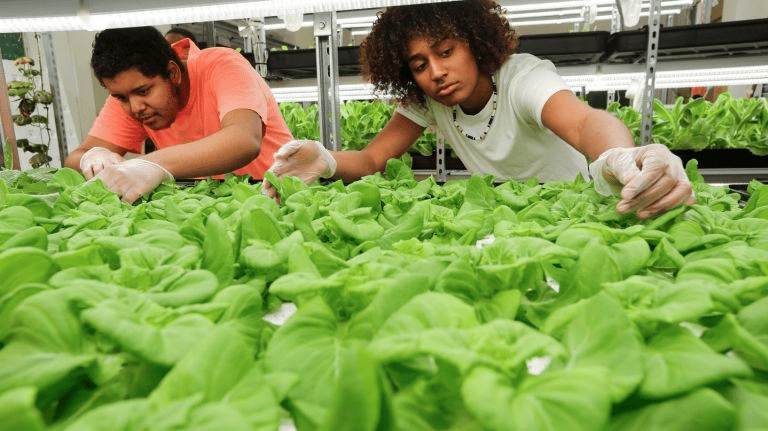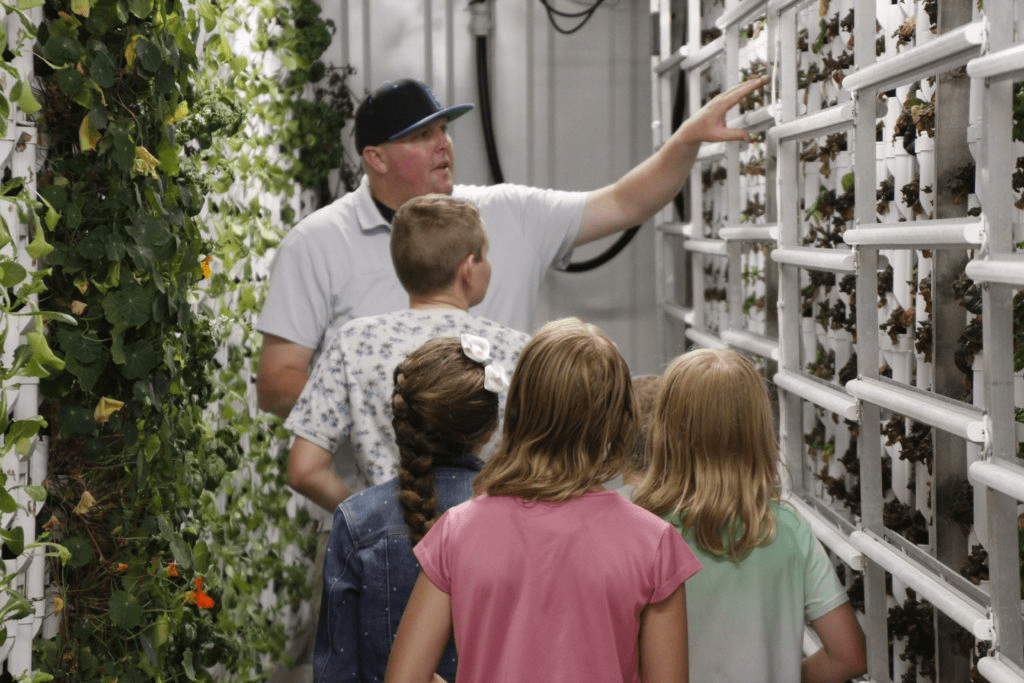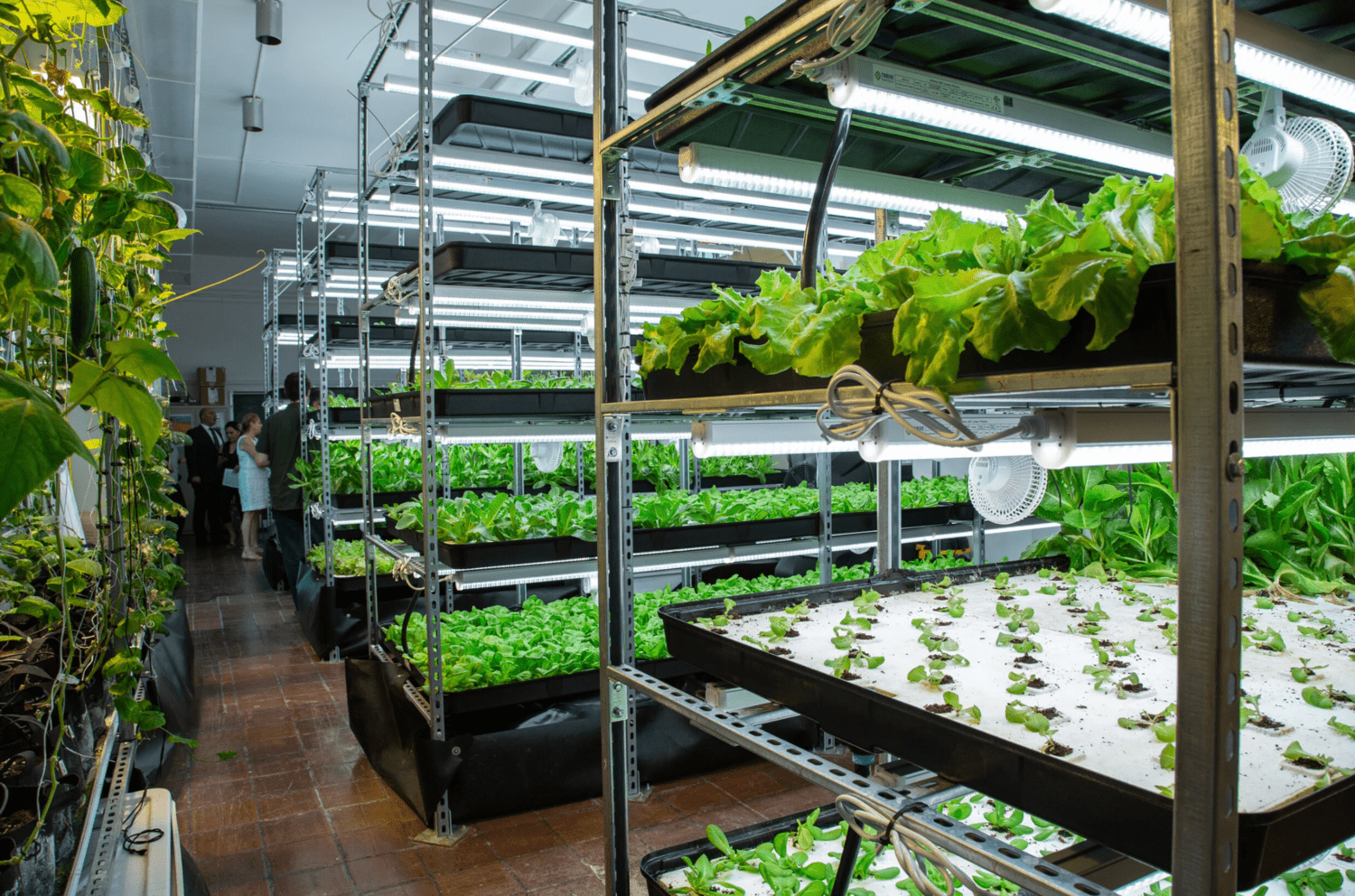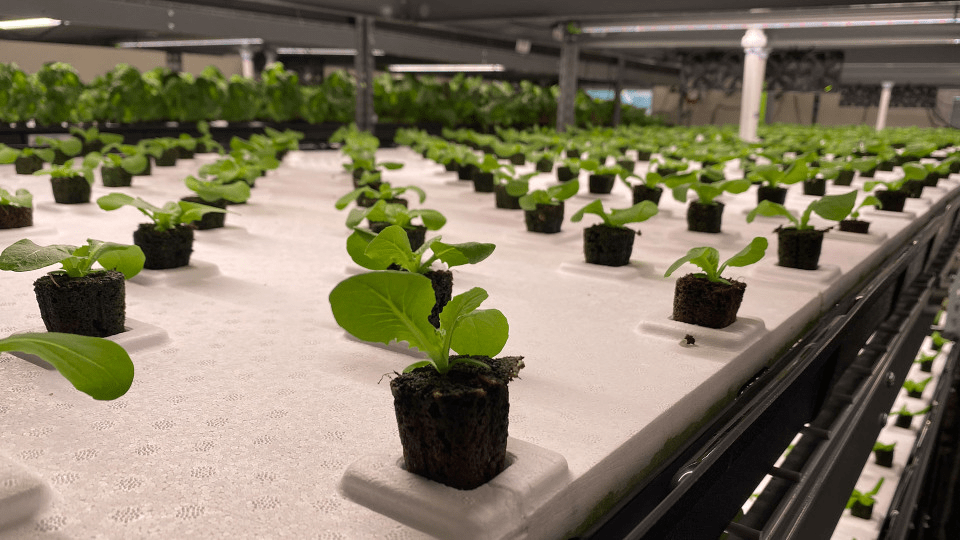May 18, 2023
CEA Education is Being Embraced as an Interdisciplinary Tool in Schools

Credit: amNewYork.
Written by: Sarah Jordan and Dorothy Braun
February 15, 2023

Credit: FarmBox Foods.
Vertical farming and hydroponics are innovative and sustainable agricultural methods that can be used in schools to teach about modern food production and environmental conservation. Serving as an excellent interdisciplinary educational tool for students of all ages, these methods allow for year-round crop production, water conservation, and waste reduction in comparison with traditional agriculture. Plus, students can connect more fully to the natural world through these programs.
Schools can utilize vertical farming and hydroponics in a number of ways, from setting up a small classroom-based system to a full-scale school-wide operation. Some of the benefits of incorporating vertical farming and hydroponics into school curricula include:
Hands-on learning experiences - Students can participate in all aspects of the growing process, from seed selection to crop harvesting, all while learning about the science behind plant growth, nutrition, and water management.
Environmental awareness - Vertical farming and hydroponics allow students to understand the impact their choices have on the environment and engage with sustainable agriculture practices. By nurturing their connection with nature from a young age, students learn to respect their environment and be stewards of the planet.
Empowering voices of change - The process of growing, harvesting, and sharing food among peers nurtures a sense of responsibility to the students and their community, raising awareness about food security, food justice, and the importance of having equitable access to nutritious food.
Science, Technology, Engineering, and Mathematics (STEM) education - The technology-driven systems used in vertical farming and hydroponics provide students with real-world applications of STEM concepts, including data collection and analysis, problem-solving, and critical thinking.
Career opportunities - As the demand for sustainable agriculture increases, students who learn about vertical farming and hydroponics in school may be better equipped for careers in agriculture, environmental science, and technology. This form of skilled labor is valuable in creating a climate-resilient society.

Credit: Teens for Food Justice.
There are many examples of organizations who have partnered with schools and successfully integrated CEA into school routines and curriculums. At Teens for Food Justice (TFFJ), students nourish their “minds, bodies, and communities” and have the opportunity to get involved with the technological engineering of the farm systems, the science surrounding growing plants indoors, and advocating for food justice with an emphasis on understanding the importance of individual access to and participation with the local food system. TFFJ has partnered with 19 schools to distribute 45,000 pounds of student-grown produce per year, leaving a life-long impact on the nearly 8,000 students they connect with.
Similarly, New York Sun Works builds greenhouse labs in urban schools to educate about sustainability within frameworks of hydroponic farming technologies. In 250 labs across the five boroughs of NYC, teachers and students creatively tackle issues of access, inequity, and representation through a hands-on STEM curriculum.
Schools like Awty International School, in Houston, Texas, have adopted an “Eco Code,” committed to educating students about sustainability, encouraging proactive innovation towards climate solutions, and inspiring community awareness around issues of environmental justice. This mission is reflected in their farm-to-table elective that allows 10th graders to maintain a hydroponic and aquaponic system that grows food for the school cafeteria.
While starting a vertical farming or hydroponic system in a school requires some planning and preparation, these models of success provide a great how-to template. The process can be streamlined with these steps:

Credit: Denver Public Schools.
Outline the goal and scope of the project - Consider the size and complexity of the system, available resources, and the educational objectives for the program.
Develop a budget - Determine the cost of equipment, supplies, and ongoing maintenance expenses, and identify potential funding sources, such as grants, donations, or local businesses.
Choose the right equipment - Select equipment and supplies based on the size and goals of the project, and consider factors such as ease of use, durability, and cost.
Establish a dedicated space - Identify a space for the system, such as a classroom, greenhouse, or outdoor area, and make any necessary modifications, such as installing lights or water and power sources.
Set up the system - Install the equipment and prepare the growing medium, whether it's soil or a nutrient-rich water solution.
Plan the curriculum - Incorporate the vertical farming and hydroponic systems into existing courses, or develop a standalone course that focuses on the systems, their benefits, and their impact on the environment. Agritecture can help support curriculum creation as needed, just reach out!
Monitor and maintain the system - Regularly monitor and adjust the growing conditions, such as light, temperature, and nutrient levels, and keep the system in good working order.
These farming methods provide a unique and engaging educational opportunity for students. By incorporating these systems into school curriculum, students can gain hands-on experience with modern agriculture practices, learn about the impact their choices have on the environment, and develop critical STEM skills. Schools can get started with a vertical farming or hydroponic system by determining the goals and scope of the project, developing a budget, choosing the right equipment, and designing the curriculum. With careful planning and attention to detail, schools can provide students with a valuable and enriching educational experience that can give them a passion for nature beyond the classroom.
